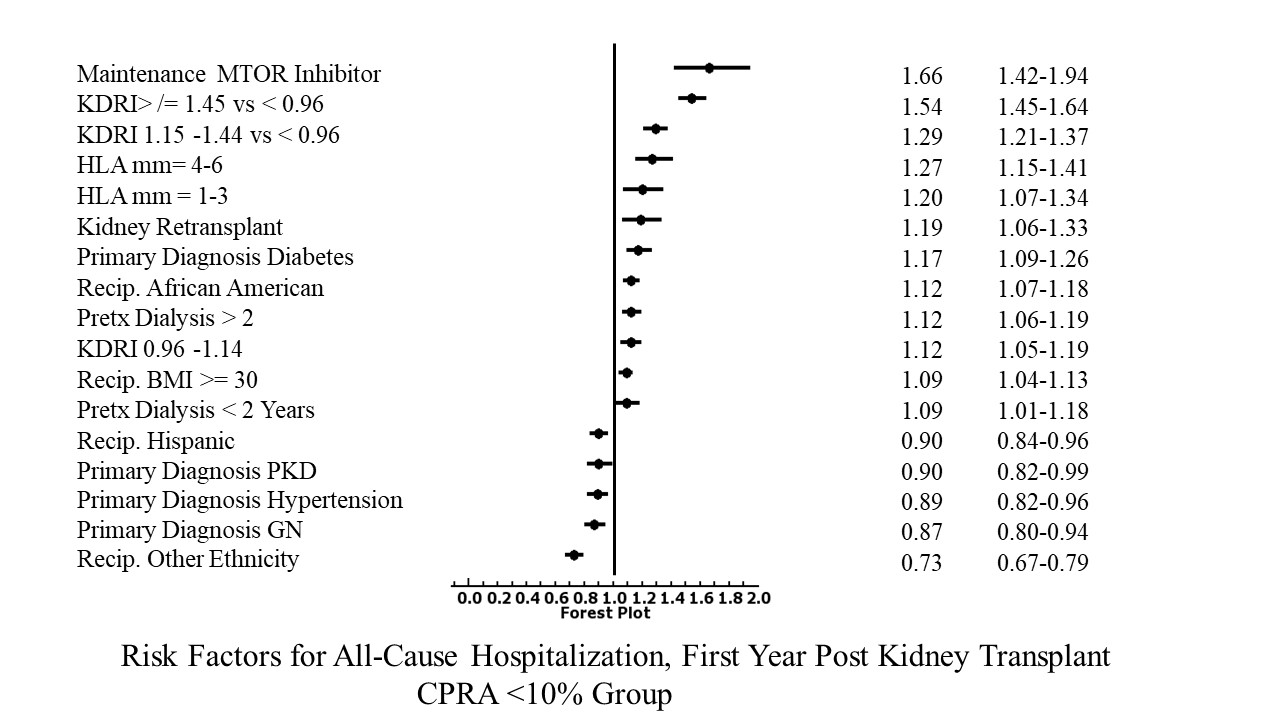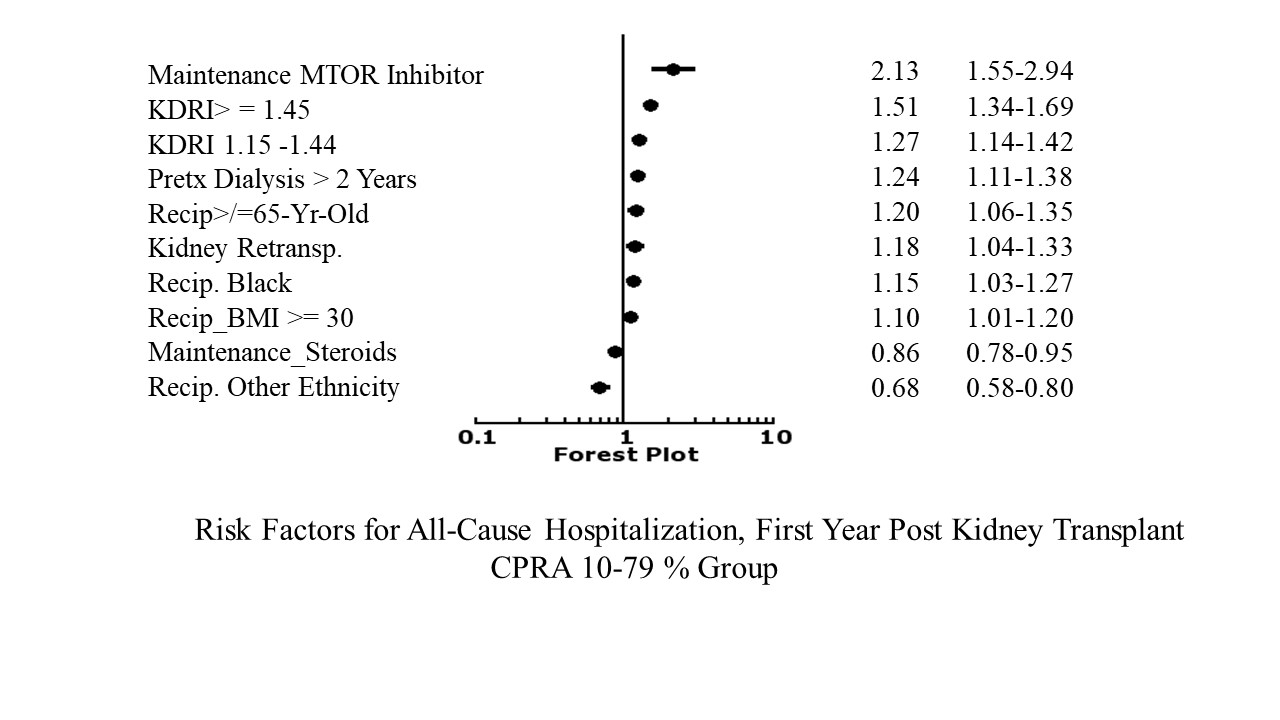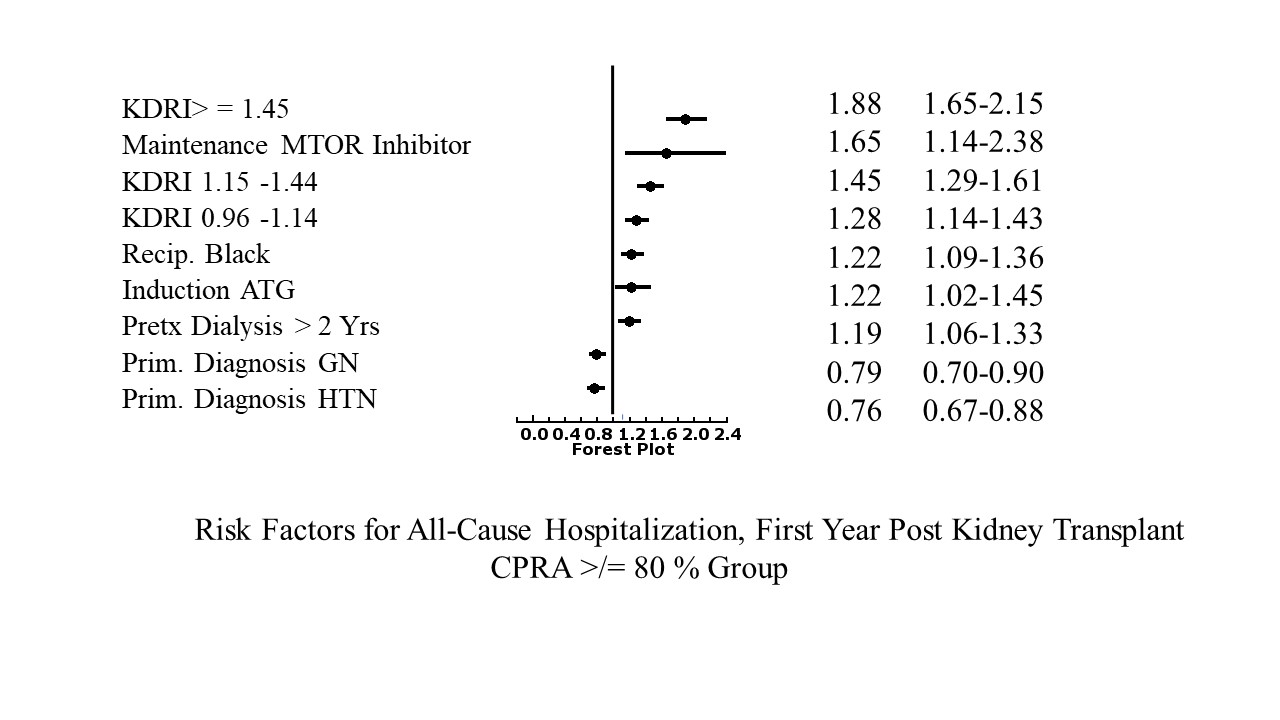Hospitalization in the First Year After Kidney Transplantation: Analyses to Identify Common Predictors of Risk Across Recipient Sensitization Groups
University of Florida, Gainesville, FL
Meeting: 2021 American Transplant Congress
Abstract number: 1278
Keywords: Kidney transplantation, Panel reactive antibodies, Risk factors, Sirolimus (SLR)
Topic: Clinical Science » Organ Inclusive » Non-Organ Specific: Disparities to Outcome and Access to Healthcare
Session Information
Session Name: Non-Organ Specific: Disparities to Outcome and Access to Healthcare
Session Type: Poster Abstract
Session Date & Time: None. Available on demand.
Location: Virtual
*Purpose: We investigated the risk of hospitalization associated with baseline risk factors in adult deceased donor (DD) kidney transplant (KT) recipients (KTRs) stratified into calculated panel reactive antibody (CPRA) groups.
*Methods: Using OPTN data, we compared the 1-yr. post-kidney transplant likelihood of hospitalization in adult DDKTRs categorized as low, intermediate, and high sensitization cohorts; corresponding to CPRA levels of <10%, 10%-79%, and >/=80%, respectively. Subsequently, we analyzed the association of baseline risk factors with the likelihood of hospitalization in the year following KT using a logistic regression model for each of the 3 cohorts.
*Results: Hospitalization risk factors common to all 3 CPRA groups were: high kidney donor risk index (KDRI-Rao), mammalian target of rapamycin inhibitor (MTORI) immunosuppression, African American KTR ethnicity, and pre-transplant dialysis duration >2 years (Figs. 1-3). Across CPRA cohorts, KDRI-Rao >/=1.45 and MTORI regimen carried the highest risks (51%-88% and 65% -113%, respectively) of post-KT hospitalization (Figs. 1-3). Anti-thymocyte globulin induction is associated with higher risks of hospitalization than alemtuzumab [HR=1.08; 95% CI=1.02-1.16], (not shown in figures) and interleukin-2 receptor antagonist [HR=1.22; 95% CI=1.02-1.45], (Fig. 3) in the low and high sensitization cohorts, respectively.
*Conclusions: The risk of first post-transplant year hospitalization may be predicted from risk factors known at the time of or at discharge after DDKT. Closer follow-up of KTR at risk may help prevent re-hospitalizations and associated adverse outcomes.
To cite this abstract in AMA style:
Santos A, Bueno E, Leghrouz MA. Hospitalization in the First Year After Kidney Transplantation: Analyses to Identify Common Predictors of Risk Across Recipient Sensitization Groups [abstract]. Am J Transplant. 2021; 21 (suppl 3). https://atcmeetingabstracts.com/abstract/hospitalization-in-the-first-year-after-kidney-transplantation-analyses-to-identify-common-predictors-of-risk-across-recipient-sensitization-groups/. Accessed December 17, 2025.« Back to 2021 American Transplant Congress



